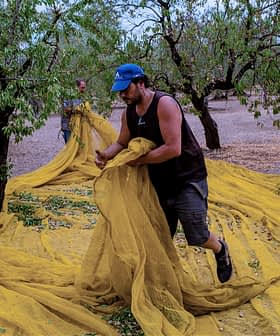
On the 22nd of July, the new PIVOLIO project was presented in Bari, the country seat of Apulia, the Southern Italian region that produces the most olive oil (40 percent of the national production comes from here). The acronym stands for Innovative Process for the Extra Virgin Olive Oil Valorisation.
The aim of the new project — that was implemented with funds from the Ministry of Education, Universities and Research within the framework of the National Operational Programme for “Research and Competitiveness” 2007 – 2013 — is to certify extra virgin olive oil quality with growers using state-of-the-art technology, to promote quality products, while at the same time opposing frauds.
Gennaro Sicolo, chairman of the local producers’ cooperative Oliveti Terra di Bari, illustrated the main features of what he described as “a research project that has a huge importance for olive growing, the leading sector of local economy.” It will help to certify extra virgin olive oil quality, thus defending the commitment of the hundreds of thousands of producers whose work has never been fully acknowledged,” he said.
For the first time, the NIR (near infrared spectroscopy) analysis will be made straight by the oil mill, for every single production place. The information will be used immediately, helping to classify and protect the olive oil quality, and to support the traceability system.
The project will involve over 400 farms in the areas of three local districts — Bari, Foggia and Bat, including the cities of Barletta, Andria and Trani — and 7 local producers’ cooperatives, together with many local organizations and scientific institutes: the Universities of Bari and Salento, the Institute of Clinical Physiology of CNR (National Research Council), the Olive Growing and Oil Industry Research Center of Rende, the CARSO (Training Center for Oncological Scientific Research) consortium, the Oliveti Terra di Bari cooperative and Apuliabiotech.
Together they will invest 4 million euros to create an “identity card” for extra virgin olive oil, identifying every single variety’s specific genetic makeup by using Nuclear magnetic resonance (NMR). This will start from some of the most representative local varieties such as Coratina, Ogliarola Barese, Cima di Bitonto, Cima di Mola and Peranzana.
Among the project’s aims is the creation of a database of the different varieties’ elements and their anti-inflammatory and anticancer effects. The producers will be able to scientifically support their products and their properties, thus adding value to their single-origin olive oils.
Customers will take advantage of the project, too: a correct and complete labelling — which will report a wide range of informations, such as all the organoleptic, nutritional and curative properties — will help them understand what they are buying (and eating), fully informed of its origin and properties.








